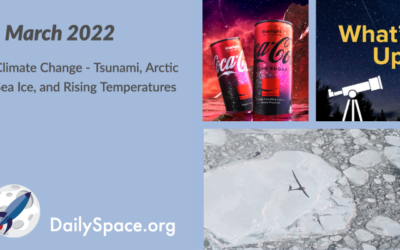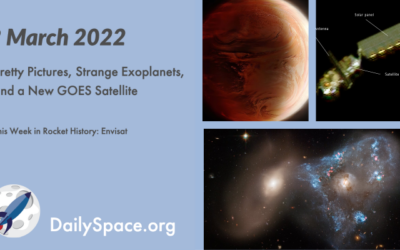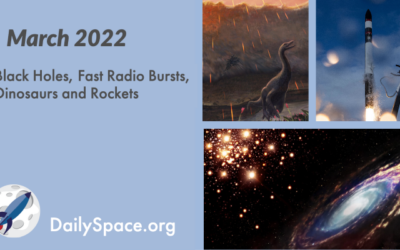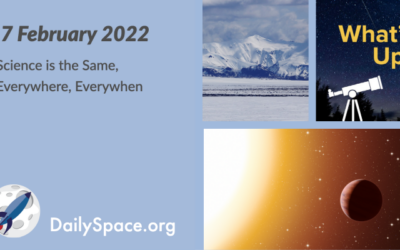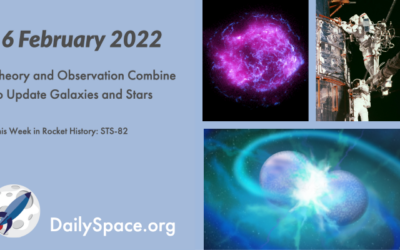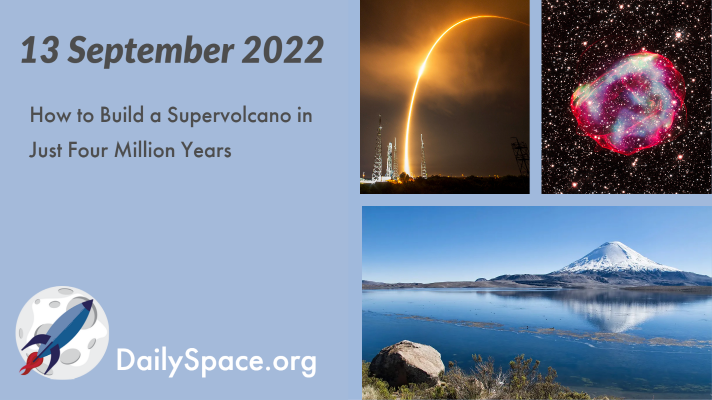
How to Build a Supervolcano in Just Four Million Years
Using pockets of gas found in tiny crystals, scientists have created a timeline for the formation and eruption of four supervolcano events in northern Chile more than twenty million years ago. Plus, rocket launches, gorgeous new space images, and an interview with Jian-Yang Li about the upcoming DART mission’s impact.
Catch us on NowMedia TV
Saturday 11pm Central / midnight Eastern
Sunday 10pm Central / 11pm Eastern
Watch live on these stations: Houston 21.10, Atlanta 22.10
or tune-in on Apple TV, Roku, YouTube Live, or Amazon Prime
Climate Change: Tsunami, Arctic Sea Ice, and Rising Temperatures
In the latest climate change news, ancient underwater landslides could help us understand tsunami risks in the Middle East, NASA now has a ‘Vanilla’ ice drone to study the Arctic, and lake temperatures are rising. Plus, we bring you joy with this week’s What’s Up and a review of Starlight Coke.
Pretty Pictures, Strange Exoplanets, and a New GOES Satellite
To bring some joy into a fraught world, we have rounded up a few of the latest image releases of star mergers and galaxies to brighten your day. Plus, we’ll look at a few strange exoplanetary systems and their amazing science, talk about the latest GOES satellite to launch, and this week in rocket history is all about Envisat.
Black Holes, Fast Radio Bursts, Dinosaurs and Rockets
As we return from our mini-break, we bring you some highlights of stories that happened while we were away, including black holes spiraling toward each other, the possible origin of a fast radio burst, and more information on the demise of the dinosaurs. Plus, Erik Madaus brings us updates on quite a few rocket launches.
Lasers, Life, and Looking at Cosmonaut Brains
Do you want lasers? I want lasers! And today’s show features lots of lasers. We also have more questions than answers about Mars’ methane, misbehaving stars, and new research on how we would look for the early signs of life on other worlds. Plus, a study on how spaceflight impacts the human brain.
Science is the Same, Everywhere, Everywhen
Today, we bring you stories proving that we do understand some things, like black holes, and that we have forgotten other things, like that the Earth’s crust can sag under the weight of ice. It’s all a lot more complicated than we like to think. But it sure is pretty, and when the science makes your head hurt, our What’s Up segment will fill your eyes with some beauty.
Theory and Observation Combine to Update Galaxies and Stars
Today, our view on the universe gets itself an update thanks to the combined efforts of theorists and observers. From a new understanding of how galaxies can lose their dark matter, to how white dwarfs can be resurrected into helium-burning stars, we have the weird, the wonderful, and in the case of a new lunar tracking system, we even have a touch of the mundane. Plus, this week in rocket history, we look back at STS-82 which serviced the Hubble Space Telescope.


 We record most shows live, on Twitch. Follow us today to get alerts when we go live.
We record most shows live, on Twitch. Follow us today to get alerts when we go live.

